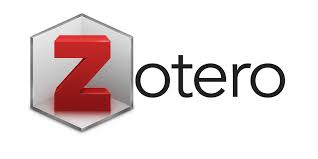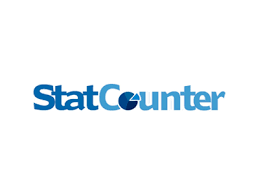Eksplorasi Kemampuan Siswa Memecahkan Masalah Program Linier Grafik dan Soal Cerita
DOI:
https://doi.org/10.29240/ja.v3i1.2707Keywords:
Exploration, Problem-Solving, Linear ProgrammingAbstract
Linear program has a scope of material that emphasizes the method of determining the optimum value (maximum or minimum). Linear programming problems are generally presented through word problems that involve linear inequalities and straight line graphs, each of which requires different strategies and knowledge. This research was conducted to determine differences in the ability of students who solve linear program problems through word problems and graphical approach. Research subjects were 26 students at 11th grade in SMAN 7 Mataram. The research method used was mixed methods with sequential explanatory design. Quantitative data obtained through tests and qualitative data obtained through interviews. Data analysis with two-tail comparative statistical tests produced tstatistic = 3.63 > tcritical one-tail = 2.05 at α=0.05 which means that H0 is rejected. Then it can be concluded that there were significant differences in the ability of students who solved linear program problems through word problems and graphical approach. The results of this study can be used as a reference for the importance of providing students with consistent, continuous and varied problem solving experiences in their level of difficulty.
Downloads
References
Amaliah, A. I. (2018). Analisis Kesalahan Peserta Didik Dalam Menyelesaikan Soal Program Linier Pada Kelas XII IPA SMA Negeri 7 Mataram Semester Ganjil Tahun Ajaran 2017/2018. Unpublished Thesis. Mataram: Universitas Mataram.
Asih, I. . (2011). Peningkatan Kemampuan Siswa SMAN 8 Denpasar Dalam Menyelesaikan Soal Cerita Pokok Bahasan Program Linear Mata Pelajaran Matematika. Udayana Mengabdi, 10(2), 67–71.
Bahar. (2013). Investigasi Karakteristik Kesalahan Siswa SMK Dalam Pemecahan Masalah Soal Cerita Program Linier Ditinjau dari Kemampuan Awal. Unpublished Thesis. Makasar: Universitas Negeri Makasar.
Bazaraa, M. S., Jarvis, J. J., & Sherali, H. D. (2011). Linear Programming and Network Flows. Retrieved from http://marefateadyan.nashriyat.ir/node/150.
Hanifah, E. H. (2011). Identifikasi kesalahan siswa dalam menyelesaikan soal Cerita Matematika materi Sistem Persamaan Linier Dua Variabel berdasarkan metode analisis kesalahan Newman : studi kasus SMP Bina Bangsa Surabaya. Unpublished Thesis. Surabaya: IAIN Sunan Ampel Sur.
Kementerian Pendidikan dan Kebudayaan, R. I. (2017). Buku Guru Matematika Untuk SMA/MA/SMK/MAK Kelas IX. Jakarta: Kementerian Pendidikan dan Kebudayaan RI.
Mahmudah, I. D. (2017). Kesalahan Siswa Dalam Menyelesaian Soal Program Linier Bentuk Cerita Berbasis Newman di MAN Salatiga. Unpublised Thesis. Surakarta: Universitas Muhammad.
Mustaqim. (2013). Proses Scaffolding Berdasarkan Diagnosis Kesulitan Siswa dalam Menyelesaikan Masalah Program Linear dengan Menggunakan Mapping Mathematics. Jurnal Pendidikan Sains, 1(1), 72-78. Retrieved from http://journal.um.ac.id/inde.
Ningrum, L. S. (2013). Analisis Kemampuan Siswa Menyelesaikan Soal Matematika Dalam bentuk Cerita Pokok Bahasan Barisan dan Deret Pada Siswa Kelas XII SMA AL-Islam 3 Surakarta. Unpublished Thesis. Surakarta: Universitas Muhamma.
Ninik, Hobri, & Suharto. (2014). Analisis Kemampuan Pemecahan Masalah Untuk Setiap Tahap Model Polya Dari Siswa ASMK Ibu Pakusari Jurusan Multimedia Pada Pokok Bahasan Program Linier. Kadikma, 5(3), 61-68. Retrieved from https://jurnal.unej.ac.id/in. https://doi.org/10.12681/er.9602
Nurohmah, S. D., & Setianingsih, R. (2014). Implementasi Scaffolding untuk Mengatasi Kesulitan Siswa Kelas X SMK Kartika 1 Surabaya dalam Meyelesaikan Soal Cerita pada Materi Program Linear. MATHEdunesa: Jurnal Ilmiah Pendidikan Matematika, 3(3), 221-229. Retrieved from https://jurnalmahasiswa.un.
Rosli, R., Goldsby, D., & Capraro, M. M. (2013). Assessing Students’ Mathematical Problem-Solving and Problem-Posing Skills. Asian Social Science, 9(16), 54-60. Retrieved from http://www.ccsenet.org/journ. https://doi.org/10.5539/ass.v9n16p54
Schoenfeld, A. H. (2014). Expert and Novice Mathematical Problem Solving. Journal for Research in Mathematics Education, 13(1), 256-267. Retrieved from https://eric.ed.gov/?id=ED.
Vanderbei, R. J. (2015). Linear Programming: Foundation and Extensions. In New York: Springer. https://doi.org/10.1201/9781420010749
Wildana, W., Mustamin, S. H., & Nur, F. (2016). Analisis Kesalahan Peserta Didik Dalam Menjawab Soal Program Linear Kelas XII IPA MAN 1 Makassar. MaPan, 4(1), 75-82. Retrieved from http://103.55.216.56/index.p.https://doi.org/10.24252/mapan.2016v4n1a6
Downloads
Additional Files
Published
Issue
Section
Citation Check
License
Authors who publish with ARITHMETIC: Academic Journal of Math agree to the following terms:
- Authors retain copyright and grant the journal right of first publication with the work simultaneously licensed under a Creative Commons Attribution-NonCommercial-ShareAlike 4.0 International License (CC BY-NC-SA 4.0) that allows others to share the work with an acknowledgment of the work's authorship and initial publication in this journal.
- Authors are able to enter into separate, additional contractual arrangements for the non-exclusive distribution of the journal's published version of the work (e.g., post it to an institutional repository or publish it in a book), with an acknowledgment of its initial publication in this journal.
- Authors are permitted and encouraged to post their work online (e.g., in institutional repositories or on their website) prior to and during the submission process, as it can lead to productive exchanges, as well as earlier and greater citation of published work (See The Effect of Open Access).







